Amidst the blazing sun bathing everything in its warmth-there stands tall, full-grown golden corn on the cobs on either side of the country road, ready to be harvested. But beyond its rich taste and ample participation in numerous barbecues and picnics, corn is the hub of essential nutrients that should be a part of our healthy diet.
So, let’s take a leisurely walk down the road heading towards the nutritional benefits of the corn cob!
What is it?
Corn- also known as maize, is a vegetable and a grain that comes in the form of the kernel on the cob, covered by husk. It is the third largest plant-based food source and is one of the most popular vegetables in the United States.
Corn was first grown about 10,000 years ago in Southern Mexico from a wild grass named teosinto. It comes in several varieties like sweet corn, popcorn, tortillas, polenta, chips, cornmeal, grits, oil, and syrup.
Corn is widely used as fuel or animal feed; 40% of the corn grown in the US is utilized as fuel, while 60-70% of the corn worldwide is in animal feed. Corn on the cob is gluten-free and provides maximum health benefits when consumed fresh as boiled, roasted, or grilled.
Kinds of corn:
Corn on the corn comes in many kinds, but five major types of it are:
1. Sweet corn:
Sweet corn, the prince of summertime picnics and barbeques, is the second-largest processing crop grown in the U.S.! It has a low starch and high sugar content and it is best to consume in the early milky stage. It comes in white, yellow, and a combination of both colors.
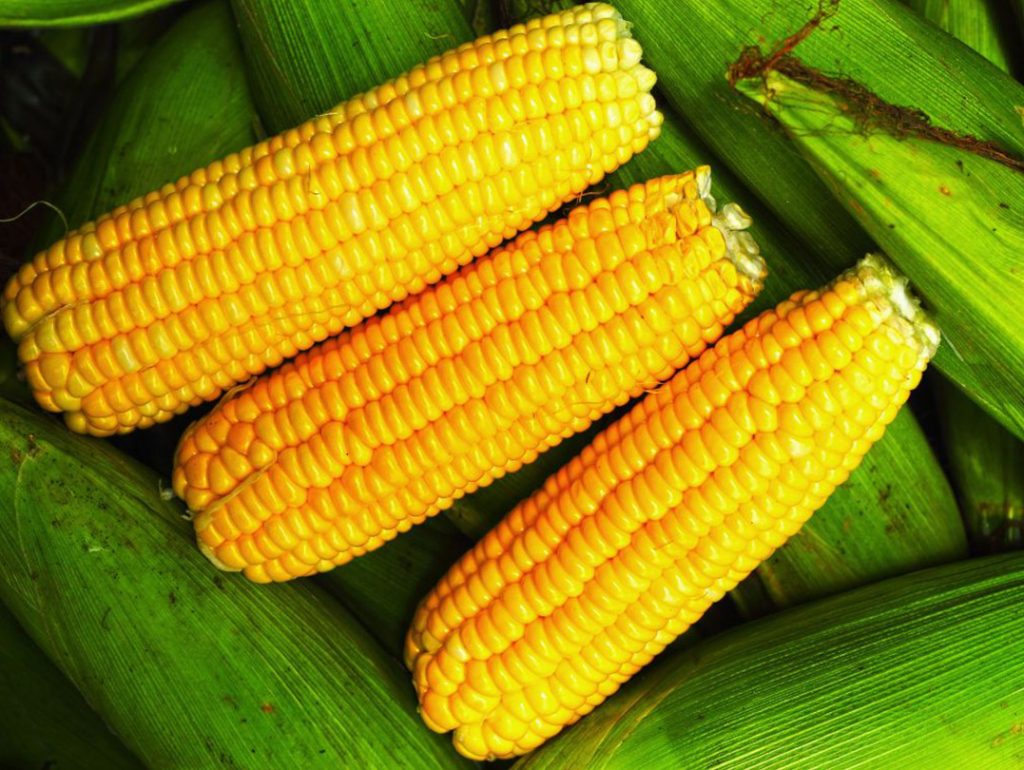
2. Dent corn:
Also known as field corn and sometimes as yellow corn, dent corn is mainly used for animal feed and processed foods in industries. The name “dent” comes from the dent or dimple formed at the top of the kernel after it dries. The majority of commercially raised corn in the US is dent corn that is used to produce corn flakes, corn chips, masa, and corn beer. These corns have high starch and low sugar content and are refined into high fructose corn syrup.
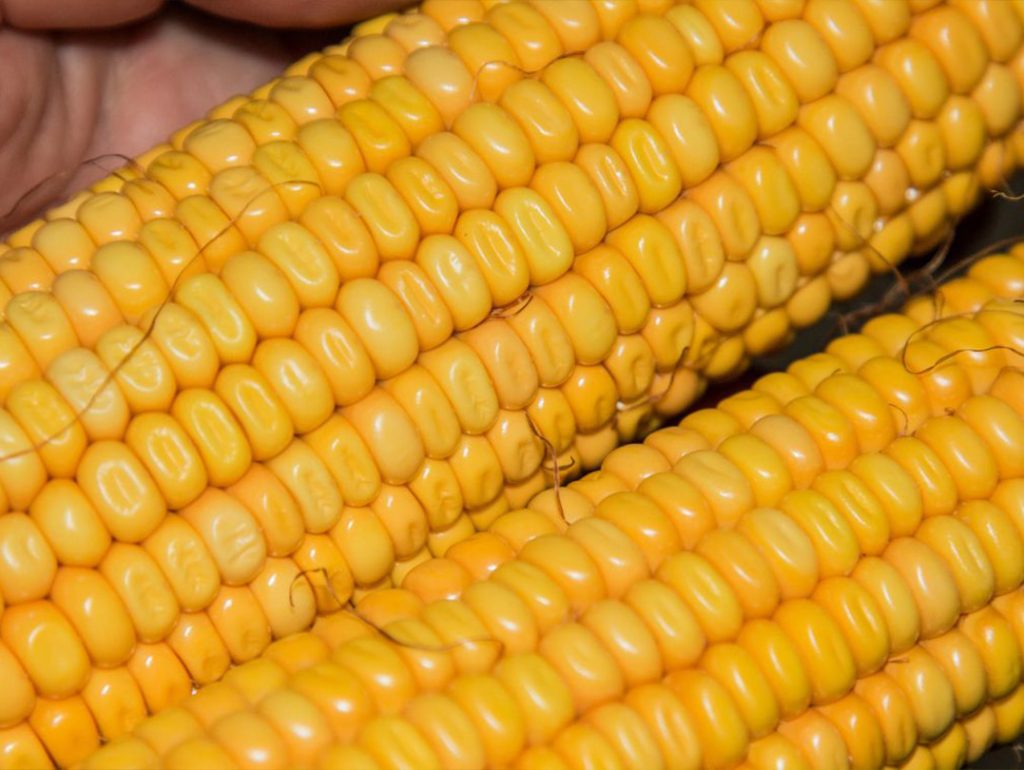
3. Popcorn:
I find it hard to believe there is anyone who doesn’t know what popcorn is or hasn’t tried it at least once in their life!
This all-time favorite movie snack’s kernel has a hard outer shell and soft inner starch. They are produced when the outer shell of the kernels pops open by heat by converting the moisture to steam, and the pressure pops it open, yielding white and crunchy popcorn. The middle of the kernel also comes in yellow, red, or even multi-color.

4. Flint corn:
Flint corn, also termed Indian corn, has been cultivated since before Native Americans and is mainly harvested in Central and South America at present. The corn has a glassy appearance and tough outer layers that serve as a protective barrier to the soft endosperm inside the kernel. They are less susceptible to insect attack and can be stored for a long time due to their hard surface. Flint corn has a starchy and gummy texture.
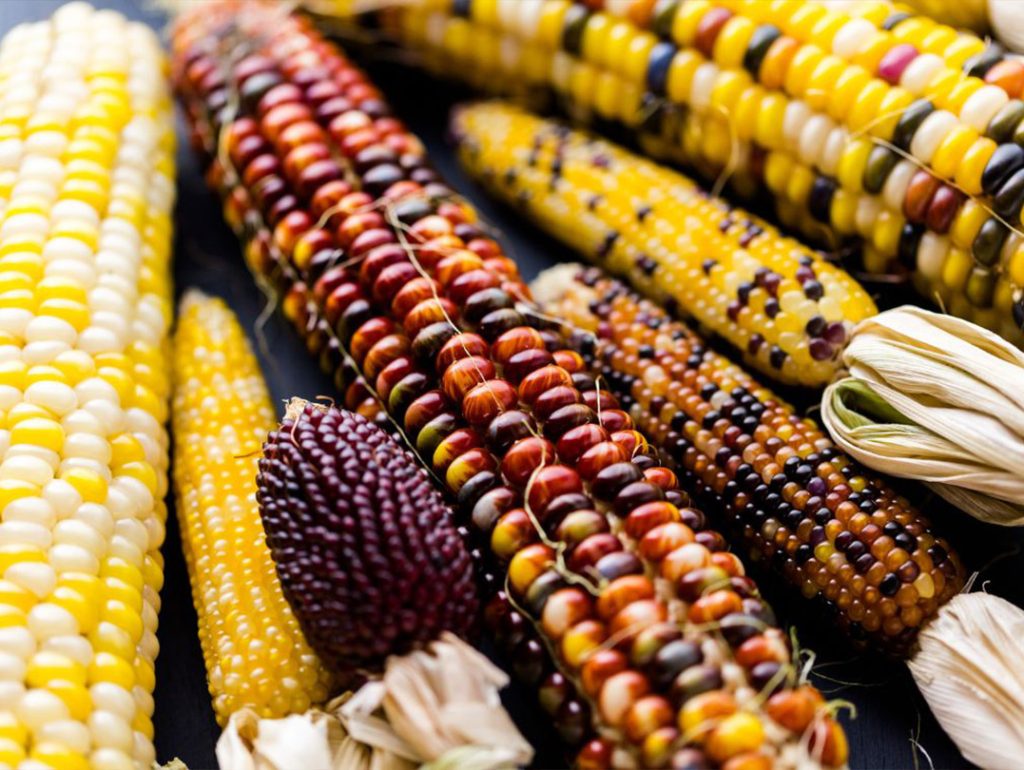
5. Flour corn:
Flour corn has starchy and soft-shelled kernels that make it easy to make corn flour. The flavor of this corn is subtle but sweeter and tender than the flint ones and less sweet than sweet corn. It mainly comes in white but is also available in blue color.
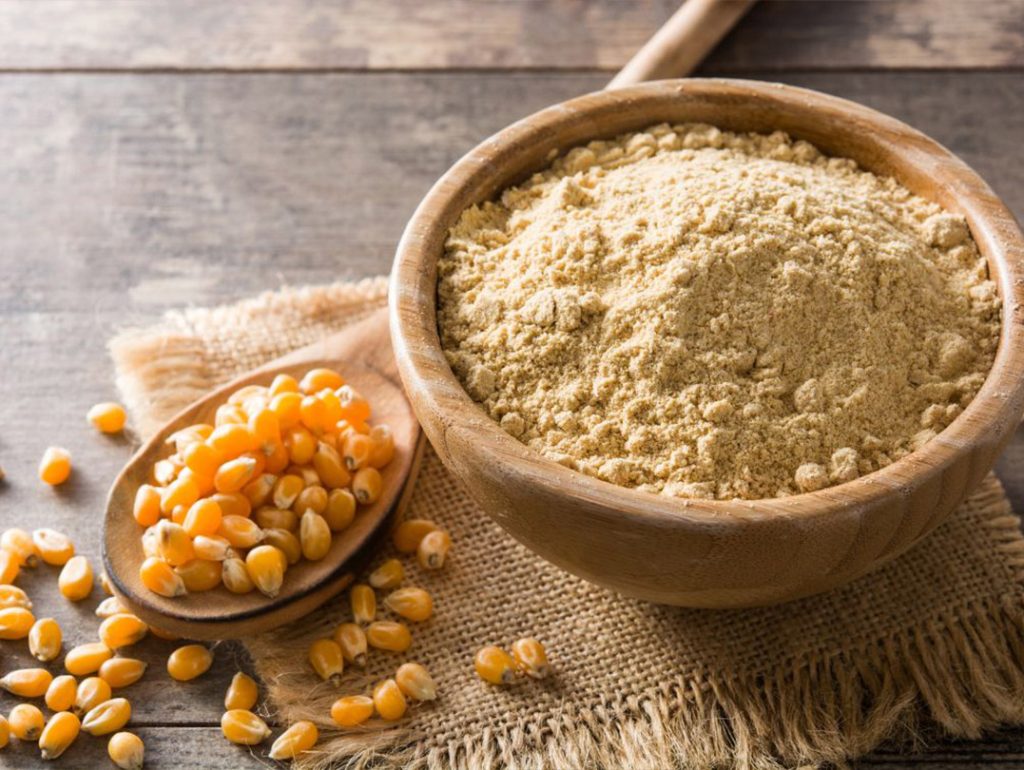
Nutrient composition of corn on the cob:
According to USDA, one medium corn ear (102 g) provides 87.7 kcal and contains a high amount of carbohydrates (19.1g). The carbohydrate content is divided into fiber (2.04 g), starch (5.18 g), and sugar (6.4 g). Corns are high in protein (3.35 g) which makes it a whole grain, and the fats (1.38 g) come mainly from mono-unsaturated and poly-unsaturated fats. Corns are a rich source of micro-nutrients incorporating ample amounts of Iron, Magnesium, Phosphorus, Potassium, Sodium, Choline, Vitamin A, Vitamin C, and Thiamine.
| Nutrients | Amount |
|---|---|
| Energy | 87.7 kcal |
| Protein | 3.35 g |
| Fats | 1.38 g |
| Carbohydrates | 19.1 g |
| Fiber | 2.04 g |
| Starch | 5.18 g |
| Sugar | 6.4 g |
| Iron | 0.53 mg |
| Magnesium | 37.7 mg |
| Phosphorus | 90.8 mg |
| Potassium | 275 mg |
| Sodium | 15.3 mg |
| Choline | 23.5 mg |
| Folate | 42.8 mg |
| Vitamin A | 9.18 mg |
| Vitamin C | 6.94 mg |
| Thiamine | 0.16 mg |
Role in human nutrition:
Let’s discuss some of the health benefits of corn on the cob among the sea of benefits it provides:
Eye health:
Corn contains carotenoids lutein and zeaxanthin that help prevent eye-related conditions like cataracts and macular degeneration.
These carotenoids with vitamins C, E, copper, and zinc protect against this condition.
Digestive health:
Corn is rich in fiber that helps promote gut health by providing bulk food and maintaining bowel movements. Fiber also lowers the risk of heart disease as well as cancers, especially colon cancer. Eating fresh corn, popcorn, and other grains helps intake of more fiber.
Corn has also been studied in terms of protection in diverticulitis diseases, a condition characterized by inflammation of the digestive tract.
Weight management:
Popcorn, a type of corn high in protein and fiber and low in calories, is beneficial for weight loss. However, the results for corn consumption on weight management are contrasting as some studies suggest you may want to cut your corn intake if you wish to lose weight.
Heart health:
Corn has fiber that helps promote cardiovascular health. Potassium, found in ample, helps keep the blood pressure down. It is called as the nutrient of public health as its consumption is low.
Magnesium in corn fulfills the 12% of adult requirements per day crucial for stroke and ischemic heart disease.
Prostate health:
Approximately 2-10% of men worldwide are suffering from prostatitis-inflammation of the prostate with no actual cure.
Corn contains an antioxidant called quercetin that plays a significant role in the treatment of prostatitis. This quercetin also protects against Alzheimer’s and dementia.
Gluten-free:
Corn and corn products are great options for people with celiac disease as they are gluten-free.
Improves memory:
Corn incorporates a high amount of thiamine that produces acetylcholine. It is a neurotransmitter that helps in memory and remembrance.
Phytochemicals in corn:
Phytochemicals are the non-nutrient substances abundantly present in fruits, vegetables, and whole grains and are responsible for preventing major chronic diseases. About 5000 phytochemicals have been discovered to date, yet some are still unknown. Most of the chemicals found in corn are present in the kernel and bran with the highest anti-oxidant activity than other grains.
Some of the phytochemicals incorporated in corn are:
Phenolic acids:
They are potential antioxidants that kill free radicals in the body.
Flavonoids:
Consumption of flavonoid-containing foods helps reduce the risk of cardiovascular diseases, diabetes, and cancer.
Carotenoids:
Carotenoids are the precursors of vitamin A that decrease the risk of eye disease and certain cancers.
Phytosterols:
Intake of phytosterols lowers the risk of LDL and total cholesterol concentration (1).
Adverse effects of corn:
While corn on the cob is healthy and delicious, it does come with its downsides. Some of them are discussed below:
1. Diabetes:
Corn contains high starch which might not be suitable for diabetes patients. High carbohydrate content raises blood sugar even though the glycemic index of corn is 52, making it fall in the low glycemic index category. It can be a part of your healthy diet if consumed sparingly.
2. Bloating and flatulence:
Corn is a high FODMAP food, an acronym for fermentable oligosaccharides, disaccharides, and monosaccharides. High FODMAP foods are unsuitable for Irritable bowel syndrome patients as they might cause gas, bloating, flatulence, and other digestive issues.
If you still want to include corn in your diet, decreasing the serving size from one to half a corn should be a first step.
3. Anti-nutrients and toxins:
Corn contains anti-nutrients like phytic acid that may hinder the absorption of essential nutrients such as iron and zinc. Soaking the corn can reduce the phytic acid levels in it.
Cereals and legumes especially corn, are susceptible to fungi contamination that produces toxins such as mycotoxins. Consumption of these toxins may cause severe effects such as cancer and even neural tube defects.
4. Allergies:
Corn consumption may lead to allergic symptoms due to the ingestible protein confiding in it. Those symptoms are skin rashes, irritation, mucous membrane swelling, vomiting, diarrhea and headache, asthma attacks, and anaphylaxis.
The diagnosis of corn allergy is not easy, but an elimination diet is one of the easy ways of it.
Storage and safety:
Corn should be kept to preserve its quality regardless of whether it is going to be used as animal feed or for industrial purposes. They can be eaten right after harvesting but storage is advantageous for price changes and marketing purposes. The biggest problem is the transfer of moisture due to temperature fluctuations. So, aeration is necessary to cool the grain to 30-40 °F to avoid air migration and insect formation, especially in summer and spring.
A weekly check of corn is necessary for temperature fluctuations in winter by turning the fan on checking the temperature, and comparing the current temperature with the previously recorded one. Check for any unusual smells as well.
Sweet corn is best to eat after the harvest as storing decreases its sweetness. Raw corn with husks can be stored in a fridge, but without husks, it should be consumed within a day or two. Cooked corn can be stored for up to 5 days in the refrigerator while freezing and canning fresh corn is also a way to store it for a long time.
Best time to eat:
The summer season, i.e. July to September is the best time to consume fresh corn. The best corns are with firm and plump kernels while staying clear of cobs with mold or decay. Corn products canned and frozen corn, cornmeal, corn starch, popcorn, and porridge are available throughout the year.
Corn can be enjoyed eating at any time of the day, however, some researchers suggest that eating it at night before bed may cause indigestion and sleep disturbances for some individuals as it is high in insoluble fiber and starch. So, the best time to consume corn is in the morning as a breakfast option, but can also be eaten in between meals as a snack.
How to prepare/ recipes:
Corn is an easy to cook and a great food to include in your summertime cooking. It doesn’t take long to cook and the ears should be checked regularly to prevent them from becoming dry and flavorless.
Corn can be cooked in ways including grilling, microwaving, boiling, steaming, pressure cooking, and oven roasting.
Grilling:
Grilling is probably one of the best ways to bring out the smoky taste of the corn. First heat the grill up to 400 to 450°F. Pull the husk back and remove the silk. Brush the corn with some olive oil and sprinkle salt. Put the corn on the grill to cook for 8 to 10 minutes while flipping it every 2 to 3 minutes.
Microwaving:
Put the corn in the microwave, wrap it in husk and silk, and cook for 4 minutes. Take the corn out and let it cool for some time; remove the husk and silk, and enjoy the soft corn kernels after sprinkling on some salt.
Boiling:
One of the most commonly used methods in the world to cook corn is boiling it. Fill a pot with water and heat it until it starts boiling. Pull the husk back, put the corn in the boiling water, and let it cook for 6 to 8 minutes until the kernels are soft enough to be eaten easily.
Steaming:
Steaming requires a steamer basket; add water to a pot and put the steamer basket over it. Put the corn in the steamer basket and cook on high heat for 4 to 6 minutes. Check the kernels for their tenderness afterward.
Pressure cooking:
Put water in the pressure cooker and add corn to it. Seal the cooker lid and let it pressure cook for 2 minutes. Quick-release the pressure and remove the lid. Serve the warm and steaming corn with some salt and other preferred spices.
Is sweet corn high in sugar?
Sweet corn is low in starch but high in sucrose, so it is recommended for people with diabetes to consume it in moderation. The studies regarding the relationship between corn and diabetes are controversial as it is high in sugar, but the glycemic index falls in the low category i.e. 52, making it a low-glycemic index food.
Corn along with high sugar content is rich in fiber, protein, and essential micro-nutrients that help reduce the risk of diabetes. So, individuals with diabetes should keep the amount of corn they consume in check, and they are good to go!
The sweeteners such as dextrose, glucose, and high fructose corn syrup come from either flint corn or dent corn which are inedible crops mostly used for animal feed.
Corn being one of the most widely consumed cereal grains has everything from macro- to micro-nutrients. Moderate consumption of whole grain corn such as sweet corn and popcorn, can be an excellent way to add extra nutrients to your diet and prevent yourself from some major body deficiencies.

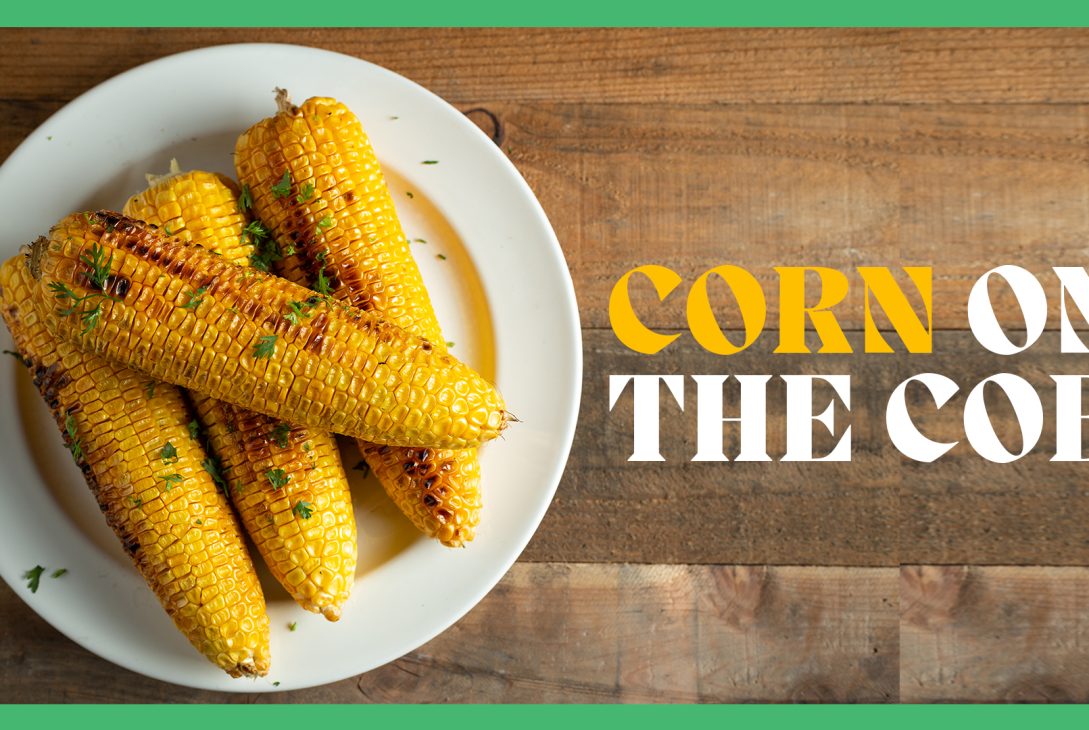
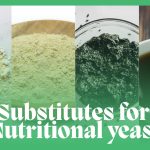
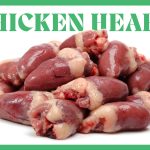
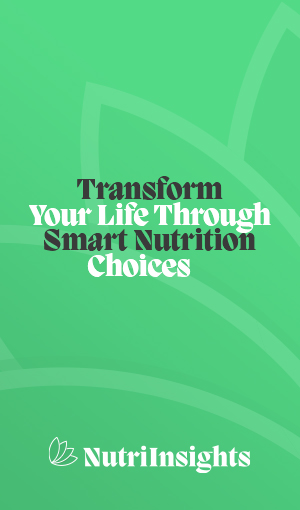
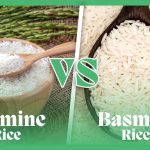
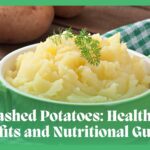
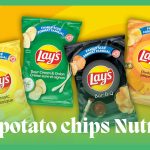
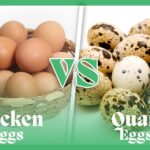
[…] health, corn on the cob is a valuable addition to a balanced diet. This article explores the various health benefits of corn on the cob and why it deserves a prominent place on your […]